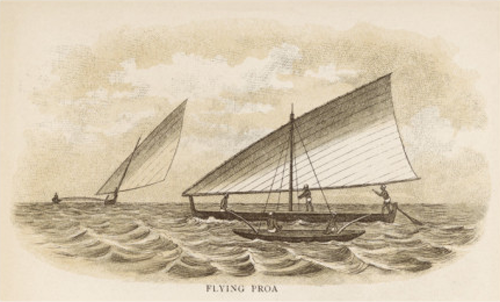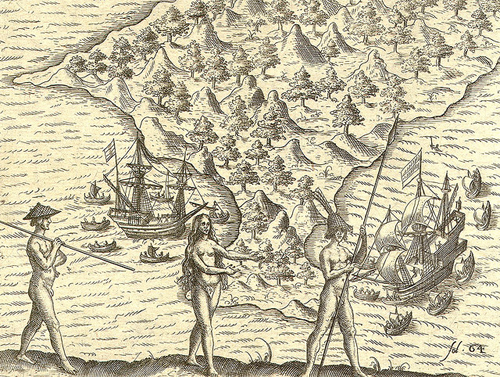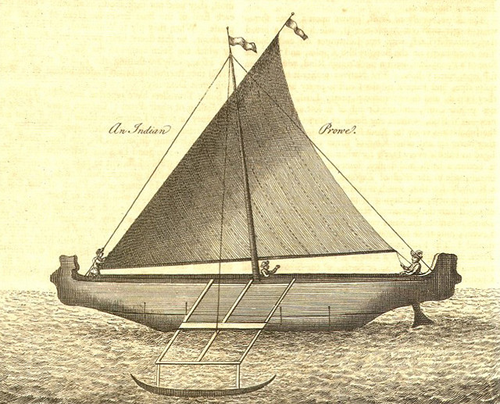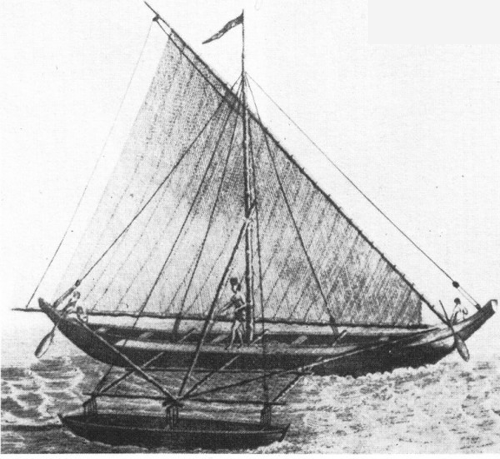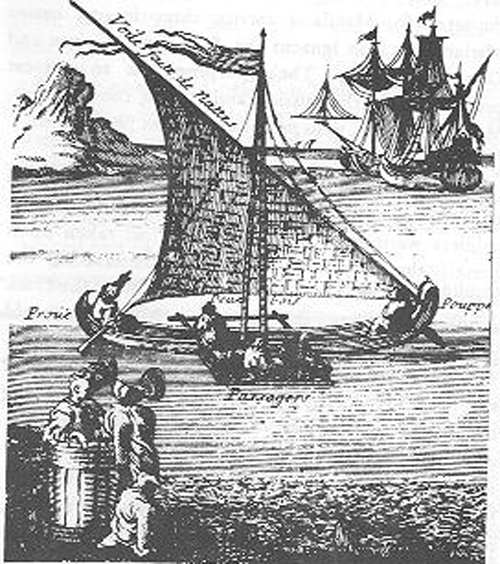Historic Context - The Chamorro Flying Proa
In the 16th and 17th centuries, Europeans who came to the Chamorro Islands marveled at what they saw - hundreds of sailing canoes would meet their ships at sea, surrounding them, sailing circles around them at speeds that were 2 to 3 times greater than their fastest ships. In their own words...
"...their outrigger boats passed by our ship very quickly even though we were under full sail...they are like dolphins bounding from wave to wave." — Antonio Pigefeta, with Magellan's squadron, 1521

"Islands of the Lateen Sails" [is] an appropriate name...on account of the great quantity of canoes that were seen to come out of these islands to the sea, all with sails - as soon as these islanders had seen our ship, that it seemed they covered the sea all around us...For a while they gave us great pleasure and a wonderful entertainment, to see their canoes so well made, of narrow boards painted in various colors and skillfully joined and laced together, in a fine and very beautiful form, so light that they looked like birds that fly in that sea..." — Carlettis, Italian traders aboard the San Pablo in 1596
"...the canoes were coming out from all sides to barter. There must have been over 200 canoes and aboard each two, three, four and five men...Their canoes are very beautiful and well made... they knew how to handle them well, sailing before the wind rather skillfully..." — Oliver van Noort, 1600
"The natives are very ingenious beyond any people in making boats...and therein they take great delight...I do believe they sail the best of any boats in the world. I did here for my own satisfaction try the swiftness of one of them...I do believe she would have run 24 mile an hour. It was very pleasant to see the little boat running along so swift by the other's side...The native Indians are no less dextrous in managing than in building these boats. By report they will go from hence to another of the islands about 30 leagues off, and there do their business and return again in less than 12 hours. I was told that one of these boats was sent express to Manila, which is above 400 leagues, and performed the voyage in four days' time." — William Dampier, 1686
"...by what I saw, I believe (they) may run twenty miles an hour, for they passed our ships like a flying bird." — Woodes Rogers, 1710
But it was all to end. In 1668 Spanish soldiers and missionaries established a permanent settlement on Guahan. In their arrogance they set about the business of systematically destroying a culture and society that they considered had no right to exist. In a bloody struggle over the next 30 years, the Spanish succeeded. The Chamorro way of life ended in 1698 when all the Chamorros living in the northern islands were forcibly relocated to Guahan where most died of disease and despair. The Spanish burned their sakman so that they could never go back.
Forty-four years later, the English ship "Centurion" under the command of Captain George Anson, arrived at Tinian where they captured four Chamorros and a Spaniard who met their ship in a sakman. Anson and his crew were fascinated by the sakman. Known to the English as the Chamorro Flying Proa, it was famous among seafarers. Many accounts had been written about its speed and design. Nautical draftsman Lieutenant Peircy Brett dismantled the proa so that he could measure the parts and began the detailed drawing of the proa that we know today as "the Anson drawing".
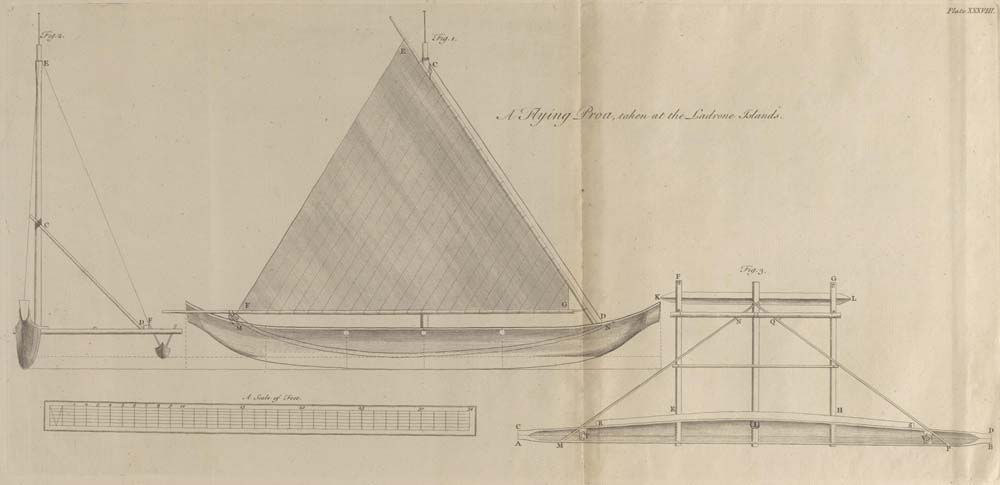
From the shore, Anson and his crew could see other proas sailing in the distance. Anson later wrote...
"The name 'flying proa' given to these vessels is owing to the swiftness with which they sail... From some rude estimations made by our people of the velocity with which they crossed the horizon at a distance while we lay at Tinian, I cannot help believing that with a brisk tradewind they will run near 20 miles an hour, which, though greatly short of what the Spaniards report of them, is yet a prodigious degree of swiftness." — Lord Anson's Voyage Round the World 1740-1744
Since the loss of their maritime traditions, many generations of Chamorros lived their entire lives without access to the open ocean. By the 1800s, hearing only the Spanish version of history, few Chamorros were even aware that they were once accomplished boat builders and sailors who invented and sailed the fastest sailing vessels in the world.

